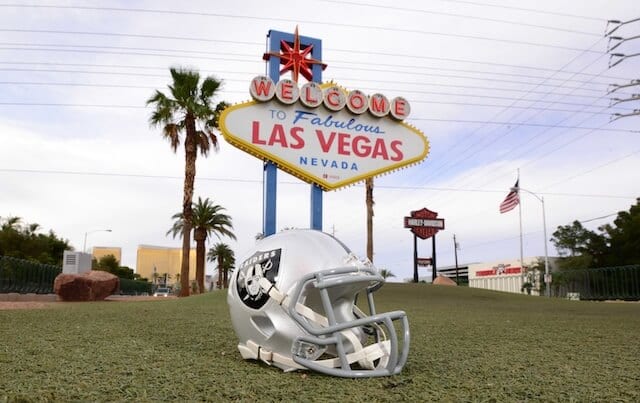In the shifting sands of American sports and entertainment landscapes, relocating the NFL’s Raiders to Las Vegas in 2020 was a strategic masterstroke. This move coincided with a broader wave of legalized sports betting sweeping across the United States following the Supreme Court’s 2018 decision to overturn the federal ban on sports wagering. While NV betting and sports gambling had long been legal in Nevada, home to the betting capital of Las Vegas, many other states quickly legalized sports betting, recognizing its potential to boost economic activity and generate substantial tax revenue.
The Raiders’ relocation to Las Vegas was not merely about finding a new home but strategically positioning the franchise at the epicenter of American sports betting. As states nationwide began to embrace sports gambling, having an NFL team in Las Vegas symbolized the merging of professional sports and legalized betting. This alignment promised to enhance fan engagement and open new revenue streams for the franchise, mainly through partnerships with casinos and betting platforms poised to capitalize on the NFL’s massive appeal. The timing and location of the move were impeccable, reflecting a forward-thinking approach to the evolving sports, entertainment, and legal landscapes in the United States.
The Formative Years
The Raiders’ journey began in 1960 in Oakland, California. Early struggles were overcome when Al Davis joined as head coach and general manager in 1963. Davis revolutionized the team’s play with the vertical passing game, focusing on long passes to outscore opponents. His innovative tactics and ability to choose players that fit the Raiders’ ethos laid the foundation for their later successes.
By the late 1960s and early 1970s, the Raiders had become a formidable force in the AFL. Their potent offense and solid defense earned them their first league championship in 1967, leading to an appearance at Super Bowl II, although the Green Bay Packers defeated them. The AFL-NFL merger in 1970 elevated their standing, leading to division titles and playoff appearances.
The Golden Years and NFL Dominance
The 1970s and early 1980s are often referred to as the golden years for the Raiders, marked by numerous victories, including three Super Bowl titles that solidified their legacy in NFL history. Their first Super Bowl win in 1976 (Super Bowl XI), where they defeated the Minnesota Vikings, was a testament to their rise under coach John Madden and a team that would see many players inducted into the Hall of Fame.
The 1980s continued highlighting the Raiders’ resilience, with two more Super Bowl wins. Notably, the 1980 championship (Super Bowl XV) marked them as the first wild-card team to win the Super Bowl. Their 1983 victory (Super Bowl XVIII) over the Washington Redskins was a demonstration of their strategic mastery and dominance.
The Los Angeles Chapter: New Beginnings
Despite mixed emotions about the move, the Raiders’ 1982 relocation to Los Angeles opened new opportunities and expanded their fanbase. Their third Super Bowl highlighted their time in Los Angeles win in 1983, proving their adaptability and sustained excellence.
However, the desire for a more fitting home and the pull of their origins brought the Raiders back to Oakland in 1995. This era was filled with ups and downs, including a notable appearance in Super Bowl XXXVII in 2002. It was marked by the emergence of new talents who continued the Raiders’ competitive legacy.
The Vegas Bet: Embracing Sin City
The Raiders’ 2020 relocation to Las Vegas and the unveiling of the Allegiant Stadium signified a pivotal turn in the franchise’s storied history. This move not only heralded a new geographical era but also brought the team into a state known for its entertainment and gaming industries, aligning perfectly with the high-energy, high-stakes image of the Raiders. The Allegiant Stadium, a marvel of modern engineering and design, cost approximately $1.9 billion to construct. It features a retractable natural grass field, expansive operable walls that offer a view of the Las Vegas Strip, and a seating capacity of around 65,000, which can expand to accommodate up to 72,000 for select events.
The value of this monumental investment extends beyond the architectural grandeur, as it significantly boosts the team’s financial prospects through increased ticket sales, sponsorships, and national visibility. Furthermore, the state-of-the-art facilities provide the players with top-tier training environments, potentially enhancing team performance. The community’s enthusiastic reception of the Raiders has fostered a vibrant fan culture in Las Vegas, quickly integrating the team into the city’s social and cultural fabric. This warm embrace by the local community has proven pivotal in ensuring the team’s successful transition, helping solidify a solid home-field advantage for which the Raiders are known.
Legends: The Raiders’ Hall of Fame
The Raiders’ legacy is rich with individuals whose contributions have transcended their on-field achievements, earning them a revered place in the Pro Football Hall of Fame. Legendary figures such as Marcus Allen, Tim Brown, and Howie Long brought extraordinary skill and dedication to their play. They embodied the indomitable spirit and commitment to excellence that define the Raiders. Marcus Allen, known for his incredible versatility and as the 1985 NFL MVP, left an indelible mark with his record-breaking performances. Tim Brown, another standout, holds the franchise records for receptions, receiving yards, and punt return yards, showcasing his pivotal role during his tenure with the team. With his formidable defensive play, Howie Long helped lead the team to multiple playoff appearances and a Super Bowl victory.
Moreover, the Raiders’ Hall of Fame also celebrates the monumental impact of Al Davis, Sr., the iconic owner who not only crafted the team’s identity but also revolutionized football with his strategic insights and pioneering advocacy for racial and gender diversity within the NFL. Davis was instrumental in establishing the AFL and its eventual merger with the NFL, leaving a legacy that reshaped professional football. His motto, “Just Win, Baby,” encapsulates the ethos of the Raiders, a team that has consistently aimed for and achieved excellence under his leadership.
These legends have laid a foundation that continues to inspire current and future generations of Raiders, ensuring the legacy of this storied franchise continues to grow as they forge new paths in the heart of Las Vegas. Their stories of triumph and perseverance remain at the core of the Raiders’ identity, celebrated through their sporting achievements and enduring impact on the football culture.
Modern Day
As the Raiders adapt and evolve in Las Vegas, their legacy of perseverance, innovation, and commitment to excellence continues to be a beacon for the team. This commitment drives the Raiders, fostering a culture of success and unity that resonates throughout the Raider Nation. The ongoing story of the Las Vegas Raiders, marked by a steadfast commitment to excellence and a proactive approach to challenges, promises to inspire and captivate for years to come as they continue to build on their rich history in the heart of Las Vegas.





